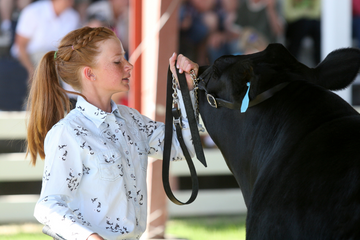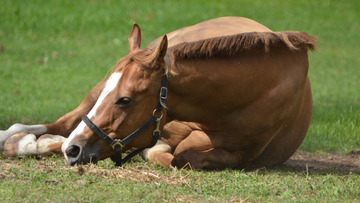 Many of us want to ride and keep our horses exercised. However, a thick winter coat makes cleaning and grooming much more difficult. Following exercise, horses need to be thoroughly cleaned to remove any residual dirt and sweat. Unfortunately, it’s often too cold out to wash them. If we do wash them, it takes an eternity for them to dry and we don’t want them to get a chill.
We thought we’d bring you some tips on how to manage your horse’s winter coat this year.
Many of us want to ride and keep our horses exercised. However, a thick winter coat makes cleaning and grooming much more difficult. Following exercise, horses need to be thoroughly cleaned to remove any residual dirt and sweat. Unfortunately, it’s often too cold out to wash them. If we do wash them, it takes an eternity for them to dry and we don’t want them to get a chill.
We thought we’d bring you some tips on how to manage your horse’s winter coat this year.
Blog
Managing Your Horse's Winter Coat

Even in warmer areas, horses grow some sort of winter coat. Its natural for horses to grow thicker coats when the days get shorter and cooler. Nature protects them from elements, usually with a coat to match the climate. Extra hair keeps them safe and warm during these colder months. Even though the temperatures are cooler, horses at times sweat more than they do during the warmer months because their coats are thicker. They continue to sweat after exercise because that thick hair, which is designed to keep them warm, retains more heat. Therefore, they don’t cool down as quickly.  Many of us want to ride and keep our horses exercised. However, a thick winter coat makes cleaning and grooming much more difficult. Following exercise, horses need to be thoroughly cleaned to remove any residual dirt and sweat. Unfortunately, it’s often too cold out to wash them. If we do wash them, it takes an eternity for them to dry and we don’t want them to get a chill.
We thought we’d bring you some tips on how to manage your horse’s winter coat this year.
Many of us want to ride and keep our horses exercised. However, a thick winter coat makes cleaning and grooming much more difficult. Following exercise, horses need to be thoroughly cleaned to remove any residual dirt and sweat. Unfortunately, it’s often too cold out to wash them. If we do wash them, it takes an eternity for them to dry and we don’t want them to get a chill.
We thought we’d bring you some tips on how to manage your horse’s winter coat this year.
 Many of us want to ride and keep our horses exercised. However, a thick winter coat makes cleaning and grooming much more difficult. Following exercise, horses need to be thoroughly cleaned to remove any residual dirt and sweat. Unfortunately, it’s often too cold out to wash them. If we do wash them, it takes an eternity for them to dry and we don’t want them to get a chill.
We thought we’d bring you some tips on how to manage your horse’s winter coat this year.
Many of us want to ride and keep our horses exercised. However, a thick winter coat makes cleaning and grooming much more difficult. Following exercise, horses need to be thoroughly cleaned to remove any residual dirt and sweat. Unfortunately, it’s often too cold out to wash them. If we do wash them, it takes an eternity for them to dry and we don’t want them to get a chill.
We thought we’d bring you some tips on how to manage your horse’s winter coat this year.





















